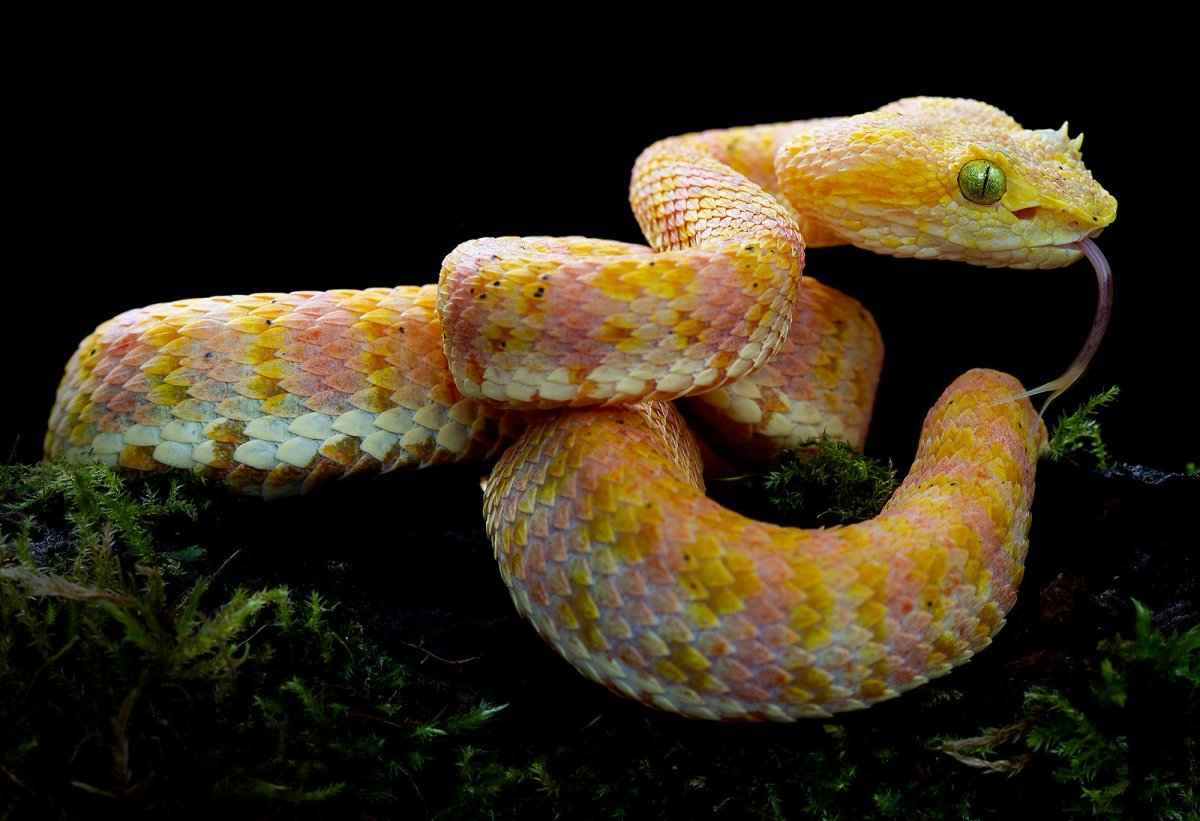-
Dear readers, jumping and crying out in surprise - 4 mins ago
-
Kamala Harris Lands Fifth Polling Win in 24 Hours - 34 mins ago
-
Varga: EU supports G20 financial targets - 37 mins ago
-
O.J. Simpson property auction approved to pay off civil claims - 40 mins ago
-
It’s all Love: Packers’ success is now in Jordan Love’s hands - 42 mins ago
-
Szijjarto: EU’s weak interest representation ‘historic sin of Brussels bureaucrats’ - about 1 hour ago
-
Mets’ Kodai Senga Exits First Start of Season With Injury - about 1 hour ago
-
Fresno County man sentenced for sexually assaulting children, dog - about 1 hour ago
-
Austin FC's Gyasi Zardes finds the back of the net in 45' to take a 2-0 lead over Pumas - about 1 hour ago
-
Gulyas: Ukraine ‘blackmailing’ countries in favour of peace talks - 2 hours ago
Snake Bites Researcher, Leading to Discovery of Five New Viper Species
Five new species of brightly colored vipers have been discovered, hidden deep within the cloud forests of Colombia and Ecuador.
The eyelash vipers were all previously thought to be part of a single species, but research into the snakes kicked off after a scientist was bitten by one in 2013, according to a new paper in the journal Evolutionary Systematics.
Four of the five new species are already considered to be facing extinction, the researchers explain, mostly due to their limited habitat being destroyed. Between 50 and 80 percent of their small geographical range has already been wrecked, and they face even more destruction.
Lucas Bustamante
The five new species are named the Rahim’s Eyelash-Pitviper (Bothriechis rahimi), the Hussain’s Eyelash-Pitviper (B. hussaini), the Shah’s Eyelash-Pitviper (B. rasikusumorum), the Klebba’s Eyelash-Pitviper (B. klebbai) and the Khwarg’s Eyelash-Pitviper (B. khwargi), in honor of several major supporters of conservation and the protection of biodiversity. Three of the five are endemic to cloud forests and coffee plantations in the eastern Cordillera of Colombia, while the Hussain’s Eyelash-Pitviper is found in southwestern Ecuador and northwestern Peru, and the Rahim’s Eyelash-Pitviper is found in the Chocó rainforest at the border between Colombia and Ecuador.
These new species are all eyelash vipers, named for their characteristic ridge of scales above their eyes. The function of these features, while intimidating, remains a mystery to researchers, but some populations have longer “eyelashes” than others.
These snakes are venomous, but are not thought to be as deadly as other species of eyelash viper. Paper co-author Lucas Bustamante, a biologist and wildlife conservation photojournalist from Ecuador, was the researcher bitten by a Rahim’s Eyelash-Pitviper during an expedition.
“The venom of some (perhaps all?) of the new species of vipers is considerably less lethal and hemorrhagic than that of the typical Central American Eyelash-Viper,” Bustamante said in the statement. “I experienced intermittent local pain, dizziness and swelling, but recovered shortly after receiving three doses of antivenom in less than two hours after the bite, with no scar left behind.”
Eyelash vipers have another unique feature in that they are polychromatic, meaning that members of the same species may have very different colors to each other, which are known as morphs. The same habitat may be home to several different color morphs from the same species, such as a turquoise morph, a moss morph, gold morph, purple morph and even a “Christmas” morph. This variation in color may have evolved to allow the vipers to hide among a greater variety of plants and backgrounds, though the exact reason for the morph system is unknown.
“No two individuals have the same coloration, even those belonging to the same litter (yes, they give birth to live young),” co-author Alejandro Arteaga, a reptile researcher and president of Ecuadorian biodiversity NGO the Khamai Foundation, said in a statement.

Alejandro Arteaga
The researchers noted that these discoveries highlight the importance of protecting the forests that these snakes and millions of other species call home.
“The need to protect eyelash vipers is critical, since unlike other snakes, they cannot survive without adequate canopy cover. Their beauty, though worthy of celebration, should also be protected and monitored carefully, as poachers are notorious for targeting charismatic arboreal vipers for the illegal pet trade of exotic wildlife,” Arteaga said.
They may have also discovered a sixth new species, but that wasn’t confirmed in the new paper, as more research needs to be done.
Do you have a tip on a science story that Newsweek should be covering? Do you have a question about the vipers? Let us know via science@newsweek.com.
Uncommon Knowledge
Newsweek is committed to challenging conventional wisdom and finding connections in the search for common ground.
Newsweek is committed to challenging conventional wisdom and finding connections in the search for common ground.
Source link






























